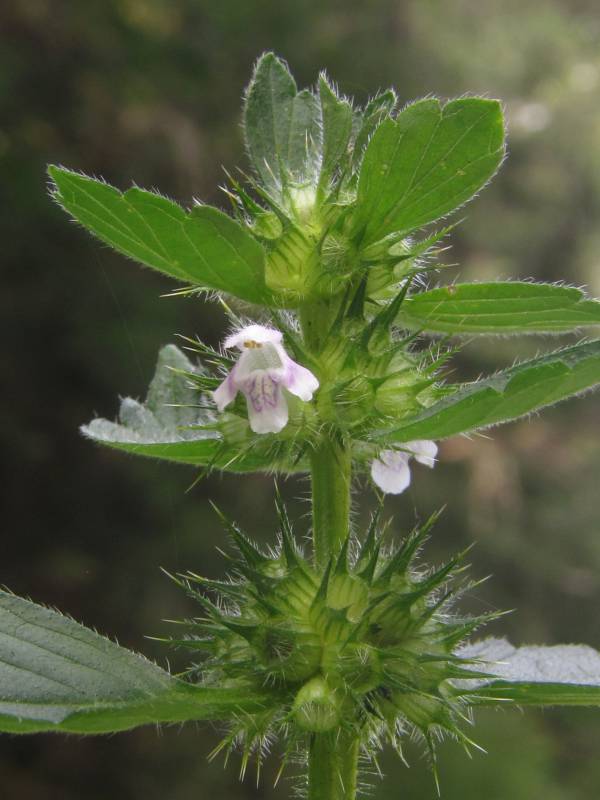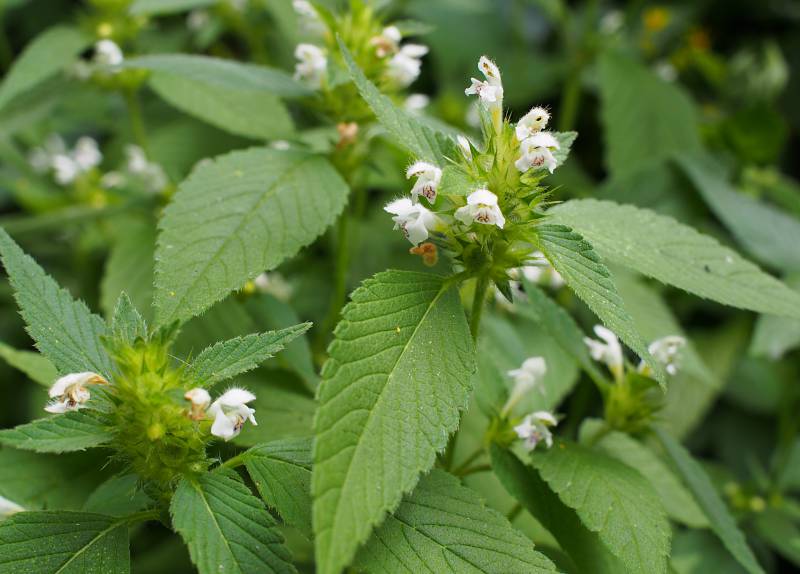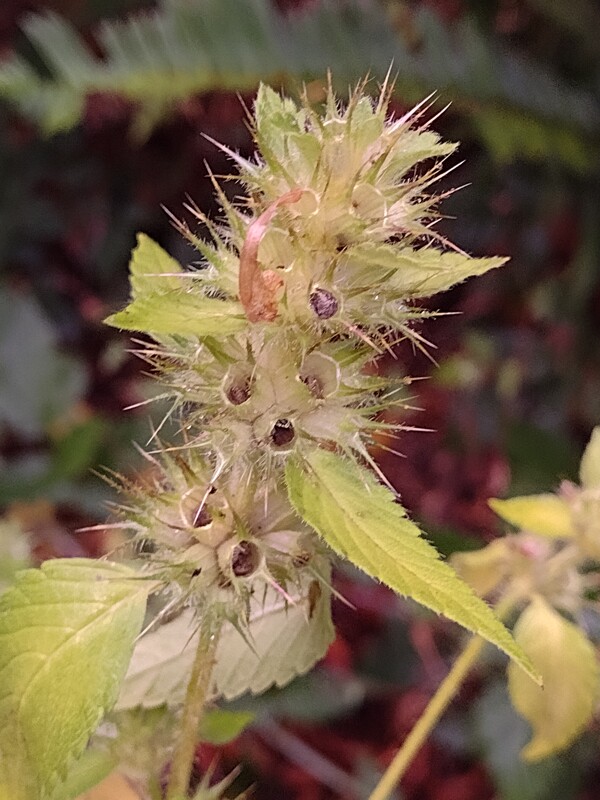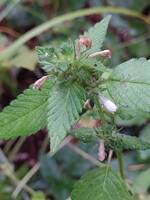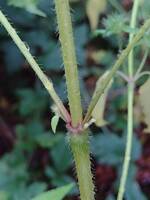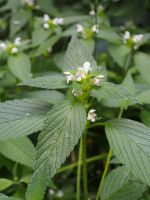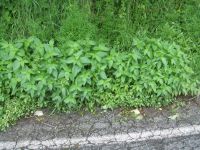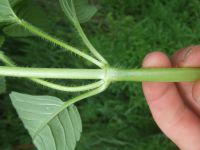Distribution: Occurring chiefly west of the Cascades crest in Washington; Alaska to California, east to Montana, east across Canada and parts of midwestern U.S. to the Atlantic Coast.
Habitat: Disturbed meadows, roadsides, forest edge, and other moist places.
Flowers: July-August
Origin: Introduced from Eurasia
Growth Duration: Annual
Conservation Status: Not of concern
Annual herbs, the stems 1.5-7 dm. tall, usually branched, with retrorsely spreading hairs and shorter, gland-tipped hairs.
Leaves opposite, petiolate, the blades rhombic-elliptic to ovate, 3-10 cm. long and 1-5 cm. broad, with short, stiff hairs.
Inflorescence of several dense verticels, the lower often remote, subtended by a pair of small leaves; calyx about 1 cm. long, the 5 erect, spine-tipped lobes about equaling the tube; corolla 15-23 mm. long, purple or pink with darker markings, two-lipped, the upper lip hood-like and enclosing the 4 stamens, the lower lip spreading, 3-lobed, with a pair of projections on the upper side near the base, the middle lobe truncate; style slender, 2-parted; ovary superior, 2-celled.
Fruit of 4 nutlets
Publication: Sp. Pl. 2: 579-580 1753.
- var. tetrahit – common hemp nettle Occurring chiefly west of the Cascades crest in Washington; Alaska to California, east to Montana, east across Canada and parts of midwestern U.S. to the Atlantic Coast.
PNW Herbaria: Specimen records of Galeopsis tetrahit in the Consortium of Pacific Northwest Herbaria database
WA Flora Checklist: Galeopsis tetrahit checklist entry
OregonFlora: Galeopsis tetrahit information
E-Flora BC: Galeopsis tetrahit atlas page
CalPhotos: Galeopsis tetrahit photos

